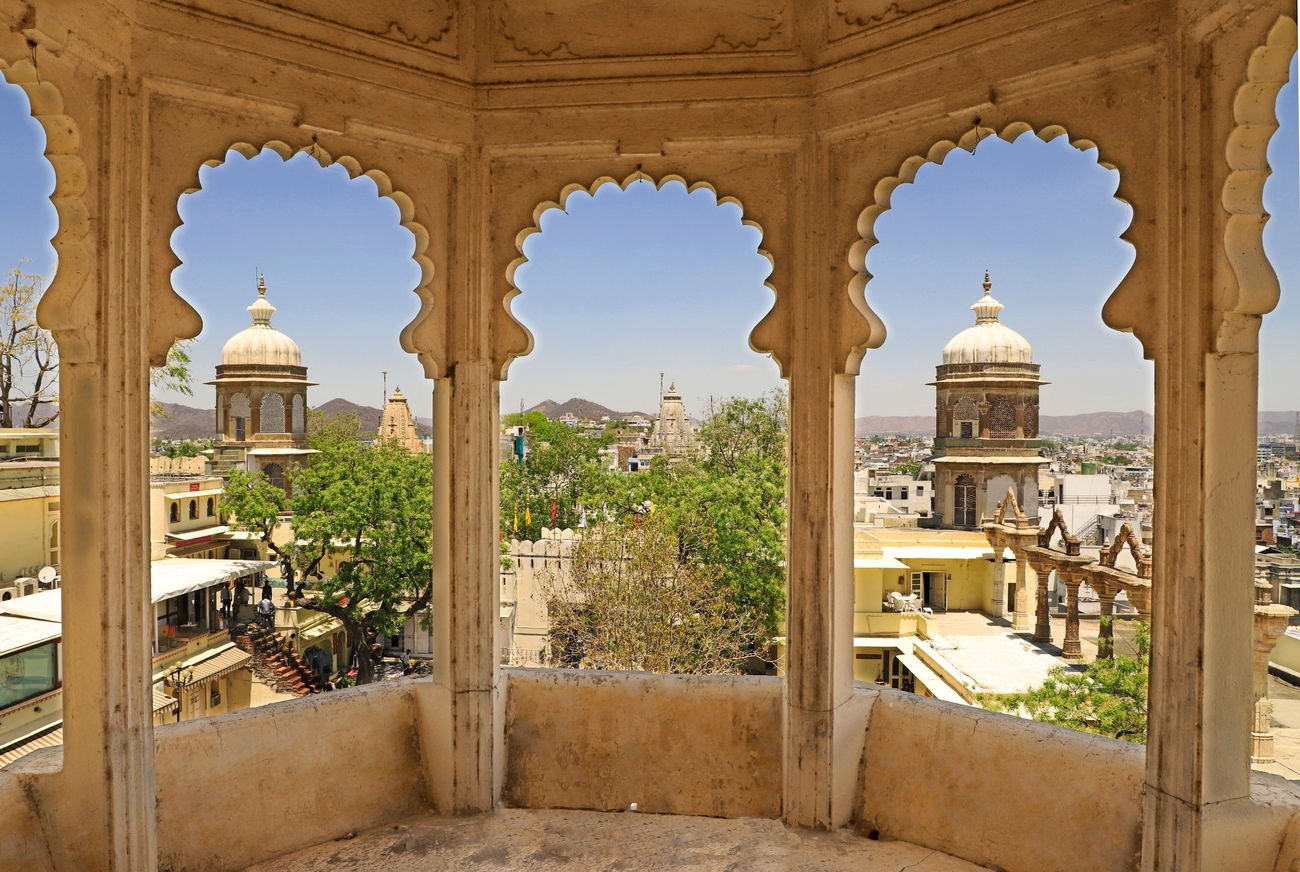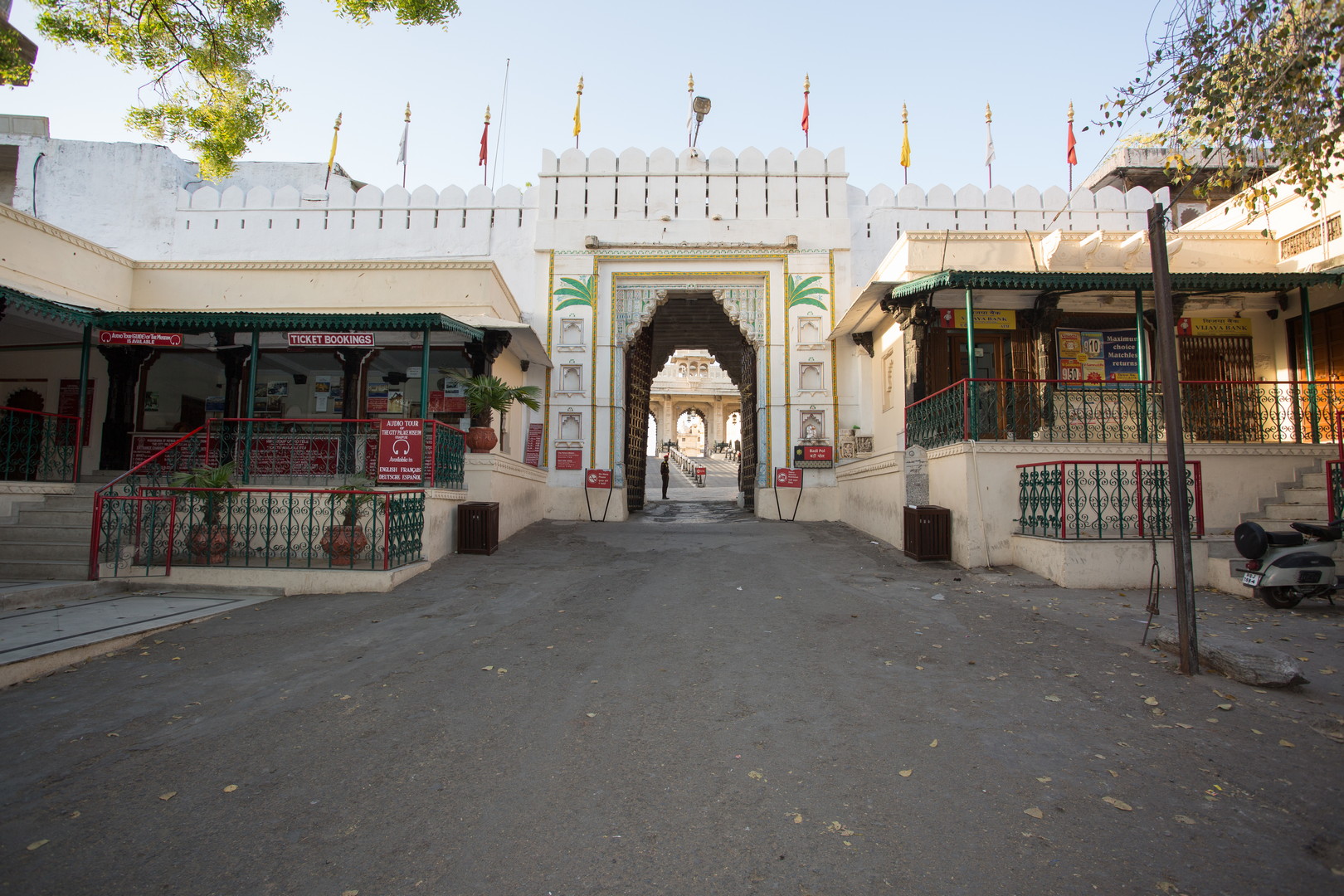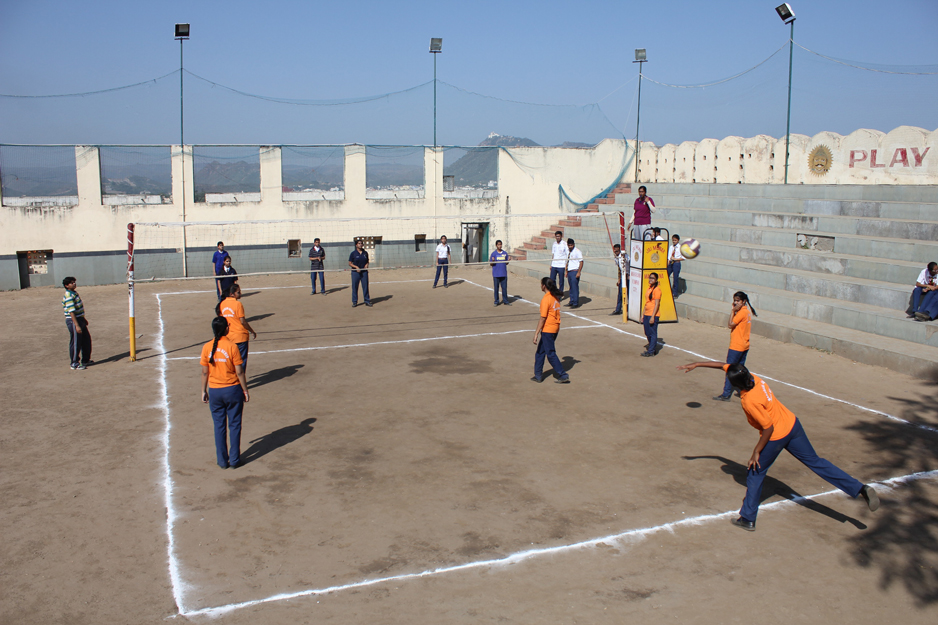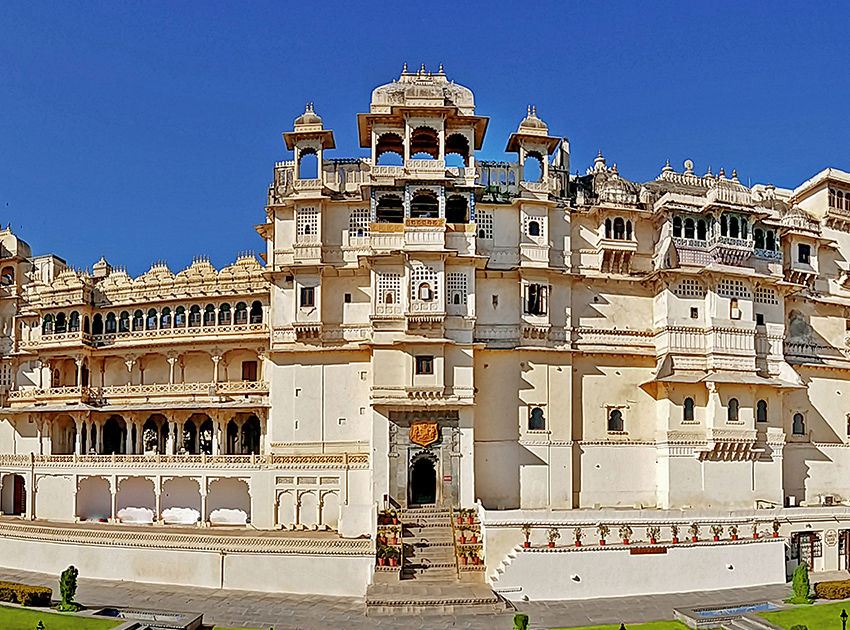
History of Nakkar Khana Ki Chatri and Ghadiyal Ki Chatri
Posted by Admin on Monday, February 3rd, 2020
There are two towering minarets with domes on both sides of Badi Pol (gate) and in one on the east called ‘Nakkar khana ki – Chatri’. A drum used to be kept, which was played every time the Maharana’s procession went out or came into the Palace. In the west, there is a tower called ‘Ghadiyal-ki-Chatri’. A gong that is still hanging was sounded to tell the time to the city dwellers. This is before the advent of watches and clocks in every home. Both these chatris were restored in 2007 and 2009 respectively.
Nakkar Khana Ki Chatri
Playing of drums in a prescribed manner on different occasions is one of the ancient customs in Mewar going back to the days of the battle of Mahabharat between the Pandavas and the Kauravas. During battles, the nagaras (or kettle drums) were mounted on the withers of a Nagara Horse and Damamis would play the drum and lead from the front as the army marched into the battlefield. Kshatriya Damami were the keepers and the players of the Mewar Royal Drums. It was their duty to protect the drum in the battlefield so that it would not fall into the hands of the enemy signaling defeat, because looting and carrying the royal symbols away, as war trophies was regarded as acts of bravery and victory. The Mewar Royal Drum played at the time of war was called ‘Ranjeet’, made of metal and buffalo hide. This drum was never conquered in war. It was mounted on the back of the elephant during war due to its huge in size.
The players of the royal drums called ‘Naggarchis’ were given living quarters at Nav Ghat, very close to the Palace. It is also important to note that the nagaras were always placed at the main entrance called Pol (gate) of the Palace. On the east is the Nakkar Khana ki Chatri or Naggar Khana. On the ground floor rests the drum called ‘Ranjeet’.
On the first floor there are two base drums called ‘Dal Badal’ made of alloy with buffalo hide. They were kept in this ‘Chatri’ and were played to announce the departure from and the arrival of the Maharana’s entourage to the Palace. When the Maharana’s procession would leave the palace the drum was played three times and on the third beat, the procession would start from the Manek Chowk.
The drum was also played to mark the sovereignty and the independence of the State of Mewar from foreign rule. It also warded off evil and brought good cheer. The drum was also played at times of war as stated above, at times of adversity, on festive and religious occasions, birth in the royal family, marriages, to announce royal proclamations and at times of death.
On auspicious occasions the royal priest would first carry out proper worship of the drum before it was played. On each occasion the notes used were different to mark the appropriate occasion. Due to circumstances after independence, the beating of the drum had stopped in the Nakkar Khana ki Chatri. However, the present Custodian and Chairman and Managing Trustee Shriji Arvind Singh Mewar of Udaipur, has taken an interest in restoring and preserving the old traditions and specifically the reuse of Nakkar Khana Ki Chatri to announce time at three different Pahar (times) morning, noon and evening) every day is remarkable. He remembers that in the earlier times, they used to beat drums three times a day at the Nakkar khana Ki Chhatri and also when the Maharana used to lead the procession during the festival of Gangaur.
Ghadiyal Ki Chatri
In 1559 CE Maharana Udai Singh II had started the construction of the City Palace, Udaipur having established his new capital in Udaipur in 1553 CE. Very little construction was carried out in the City Palace between 1572 to 1616, i.e. after the death of Maharana Udai Singh, as his son Maharana Pratap was too busy fighting the Mughal armies. Later during the reign of Maharana Amar Singh II (r. 1698-1710 CE) it was felt necessary to erect these two minarets like watch-towers on either side of the Badi Pol. These are equal to about six storeys high of which about three storeys are made of random rubble masonry and the next tw storeys are usable space, in octagonal shape open on all sides with stylistically cusped arches made of solid stone with ribbed foliated dome topped with golden spires (Kalash).
The dome and the golden spire are almost equal to one storey high. These two chatris add to the beauty of the City Palace skyline. The two located on either side of the Badi Pol, main entrance, of the City Palace Museum are called the Nakkar khana Ki Chatri (on the east) and Ghadiyal Ki Chatri (on the west).
The Nakkar khana is the space at the entrance of palaces reserved for making announcements.
The Palace was considered as the official timekeeper of the State in the old times. On the west-side is the Ghadiyal ki Chatri. This was before any mechanical clocks were manufactured. The official astronomer would calculate the time according to the position of the Sun and the Moon, and the time would change accordingly in the summer and the winter months.
The Ghadiyal ki Chatri had a water clock to calculate the time to sound the gong. The water clock they used worked as follows:
A large copper vessel, size 13″ in diameter by 6½” deep was filled with about 5 litres of water, with about 1½” being kept empty from the brim. In this, a smaller empty copper vessel, size 7″ in diameter by 4″ deep was placed. This second vessel has a pin-point hole at the bottom through which the water starts filling the empty vessel through capillary action. The vessel takes exactly 22½” minutes to fill when water starts coming from another hole on the side of the vessel. This was the indication for the time keeper to sound the huge metal alloy gong kept suspended in the chatri. Hence the gong was sounded every 22½ minutes and in 24 hours it was sounded 64 times.
The time of the day and the night was divided into 8 ‘Pahars’, with each ‘Pahar’ being of 3 hours duration. At the end of each ‘Pahar’ the gong was sounded again. The 1st ‘Pahar’ started at 4 am and at the completion of the 1st ‘Pahar’ the gong was struck once, on completion of the 2nd ‘Pahar’ the gong used to be struck twice and so on after each ‘Pahar’ for the general population of the city. The 4 am sounding of the gong was also called ‘Gajar’ which was the wake-up call. This was before the advent of watches and clocks in every home.
Restoration and conservation of Ghadiyal ki Chatri was completed in November 2009. An architectural landmark at the Palace entrance, the Chatri was restored using traditional methods and is an exemplary conservation of tangible and intangible heritage.
Who made Nakkar Khana & Ghadiyal Ki Chatri and when was it constructed?
These two minarets were constructed during the reign of Maharana Amar Singh II (r. 1698-1710 CE). A small temple of Annapoorna Mata ji was also made by Maharana Amar Singh I and inscription in foundation stone, in this temple, it is mentioned that the laying of foundation of the Badi Pol was during the reign of Maharana Amar Singh I.
Why was Nakkar Khana & Ghadiyal Ki Chatri made?
A drum used to be kept, which was stroked every time the Maharana’s procession went out or came into the Palace and in the west, tower called ‘Ghadiyal-ki-Chatri’. A Gong that is still hanging that was sounded every time on the changing hour to tell the time to the City dwellers. Today the 76th Custodian of the House of Mewar, Shriji Arvind Singh Mewar of Udaipur, is looking after the continuity of the traditions that were initiated by the previous Maharanas and keenly working into conserving and preserving the living heritage of centuries old City Palace of Udaipur.




